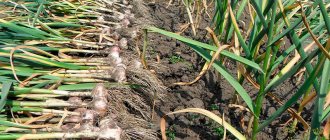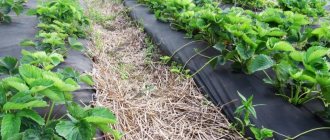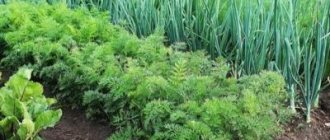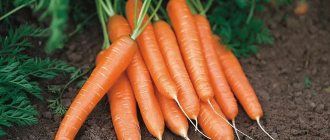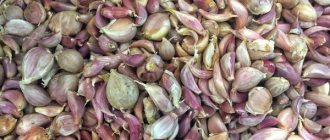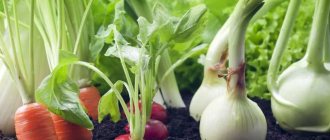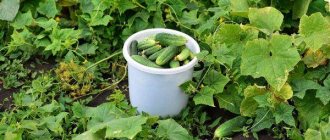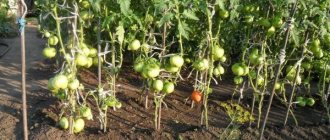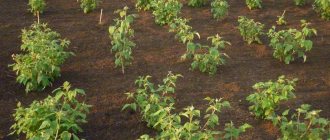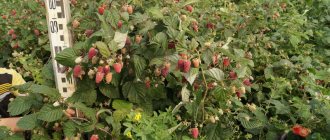Crop rotation tasks
Rotation of crops is necessary to increase soil fertility and prevent the development of diseases and the proliferation of pests. The correct combination of crops, selection of the best predecessors, and determination of the optimal period for strawberries to grow in one place will lead to an increase in yield and an improvement in the taste of the berries.
When growing strawberries, planting legumes and cereals as precursors is of great importance. They serve as green manure, promoting the formation of a fine-clump structure, accumulating a large amount of organic matter in the soil, enriching poor soil with nitrogen.
It is not recommended to grow strawberries on one piece of land for more than five years. This means that you need to plant one new bed every year, and after five years it is dug up.
Some gardeners manage to get a good harvest of berries from 6-7 year old beds. This happens; some varieties of strawberries are long-lived. But it is better to plant it in another place to restore soil fertility and prevent the spread of pests among berry crops.
What to plant after strawberries
After the strawberry crop is harvested in the fifth year, the strawberry bushes are dug up. A fairly large plot of land is being freed up.
What to plant after strawberries? Flowers. Crocuses and tulips grow well in beds after strawberries. You can set up a flower garden where modest daisies, beautiful irises, and fragrant peonies will bloom.
Garlic and onion. These crops can be planted after almost all crops, since they can disinfect the soil and kill bacteria and fungal spores. But a good harvest of onions and garlic can hardly be obtained unless the strawberries have been grown for less than five years and have not had time to greatly deplete the soil.
Legumes. It is better to plant lentils or peas, soybeans or beans on a berry bed. The beds where strawberries were previously grown are poor in nitrogen. But legumes do not need it. The advantage of planting this particular crop is that legumes leave just a lot of nitrogen in the soil. This is explained by the fact that bacteria hide in the root system of the crop, which not only accumulate nitrogen, but also release it. When planting legumes in place of a berry crop, you can get a completely enriched plot of land and a full-fledged harvest the next year.
You may be interested in: How to cover strawberries for the winter, what material is best to use
Melons, root crops. These plants are suitable for planting in strawberry beds because their root system is shallow, and the diseases that affect strawberries, root crops and melons are not terrible. Planting is possible only after fertilizers have been added to the soil.
Cereals. Buckwheat, rye or oats can be planted in strawberry beds as green manure. They will restore the soil microflora. Rye will slow down the growth of weeds, oats will add potassium to the soil, and buckwheat will improve the composition of the soil by enriching it with phosphates.
Green manure. After digging up the strawberry beds, green manure plants are immediately planted. It could be alfalfa or mustard. By mid-summer they will have gained green mass and can be mowed.
Joint planting - benefits, agricultural technology
Supporters of the view that garlic and strawberries are helpers plant them in the same bed or make beds nearby - both options are acceptable. Both winter and spring garlic are suitable for joint plantings - the main thing is to do everything on time and correctly. Let's consider the option of planting on one ridge.
Benefits from the neighborhood:
- rational use of planting area when there is a shortage;
- positive influence of cultures on each other;
- garlic phytoncides, acting as an insecticide, reduce the risk of pests on the aerial parts and roots of strawberries (nematode, aphid, tobacco thrips, mole cricket, strawberry mite, strawberry weevil, slugs);
- biologically active substances of garlic help resist fungal infections (various types of rot, late blight, fusarium, powdery mildew, etc.);
- crop rotation prevents soil depletion;
- the neighborhood affects the quantity and quality of the harvest - the garlic heads are large, the strawberry yield is higher;
- moisture needs are the same, so watering is convenient;
- can be fed with the same fertilizers.
What plants can be planted under fruit trees? What can be planted under fruit trees interests many gardeners. Someone just wants the plot...
Autumn planting
You need to start planting winter varieties of garlic after work has been done to prepare strawberries for winter (approximately mid-October): pruning, weeding, loosening, fertilizing, pest control, watering. Loose, fertilized soil is ready for planting cloves to a depth of 5 to 6 cm in the furrows between the rows of strawberries or along the perimeter of the ridge.
To protect against frost and moisture loss, the bed is covered with a layer of mulch from rotted leaves, grass, and humus. Mulch, in addition, will become a source of additional nutrition. You can add wood ash, ash from burning tops, grass, hay, leaves, and garden plant residues.
Additional insulation will be provided by straw, dry leaves, and pine branches - they will retain snow and protect the soil from freezing in the absence of snow cover. In the spring, after the snow melts, you need to remove the cover in a timely manner so that the plants do not dry out. It has been noted that garlic planted in this way sprouts early - in early April, and the heads grow large (up to 7 cm in diameter) and strong.
On a note!
Spring garlic is planted after the snow melts, when the soil temperature reaches 5°-7°C.
Care
Care activities begin in early spring, when there is still snow - scatter fertilizer granules on the surface of the bed, directly on the snow. You can use a mixture of 10 g of ammonium nitrate, 20 g of superphosphate and 10 g of potassium salt per 1 m². When the snow melts, the granules will dissolve and enter the soil along with water. If it was not possible to feed during this period, then fertilizers are scattered before the first rain or watering.
After the emergence of seedlings, shallowly loosen the rows of strawberries, trying not to damage the roots, spill the soil with a pale pink solution of manganese, then put a little humus under each bush. Summer feeding consists of watering with infusion of bird droppings and mullein.
Garlic shoots must be cut off so that large heads are formed, since nutrients will be spent not on the formation of bulbs (seeds), but on feeding the underground part. There is no need to throw away the arrows - they are used as a vitamin supplement to dishes, fried, stewed, after blanching, frozen for winter use, and used to prepare an infusion for treating garden plants against pests.
What to hill up and what to loosen? Hilling up garden plants promotes the growth of additional roots, retains moisture and prevents…
Strawberries and garlic are demanding on soil moisture, so watering should be regular, taking into account weather conditions. If the weather is dry and hot, then abundant watering is necessary once every 4-5 days.
When the heads are fully ripe, they are dug out using an agronomic knife (they are used to remove weeds) to avoid damage to the strawberry roots.
On a note!
Garlic tops can be cut all summer and used as vitamin greens, without digging up the heads. After wintering they will give rise to new friendly shoots.
What not to plant after strawberries
Experts do not recommend planting crops in place of strawberry beds that are susceptible to the same diseases as Victoria. By adding fertilizers, you can slightly improve the condition of the soil, but getting rid of multiplied pests and fungal spores is not so easy.
Important! Planting plants belonging to the Rosaceae family in the beds after strawberries is prohibited. For example, raspberries are prohibited.
Crops from the nightshade family are not recommended to be planted on soil depleted of nutrients. Eggplants and tomatoes need fertile soil.
Popular strawberry variety
Among the many varieties, the most delicious and largest berry is distinguished, the variety called Victoria. It received its name from the Queen of England. Gardeners who like to experiment in their garden beds can grow excellent crops.
The weight of one berry reaches 75 grams, which sets Victoria apart from other strawberry varieties. The taste of the berry is sweet with a slight sourness. In one season, a strawberry bush produces two harvests, with the fruits of the second harvest being larger than the first.
If you are tired of growing the same variety of strawberries, then you can plant Victoria strawberries; they will adequately replace the usual berries for several seasons.
So, we learned that garlic is a very useful crop. It can be planted before planting strawberries and planted nearby. At the same time, the soil in the garden will only improve.
Many gardeners know that strawberries have the ability to remove all mineral components from the soil composition. And if you plan to plant vegetables in the beds where strawberry bushes previously grew, you should give the land the opportunity to recover, regaining its ability to produce good harvests.
Then plant strawberries
Strawberries are comfortable after many vegetable crops. The plant grows best after legumes. This is especially convenient if you plan to plant strawberries in the fall. Legumes are already harvested at the end of summer, so you can have time to prepare beds for them.
You can plant strawberry rosettes after any types of greens, after corn, carrots, radishes, onions or garlic.
Many gardeners ask whether it is possible to plant strawberries after potatoes, because these plantings are almost the same in area. It is not recommended to do this without preparatory soil preparation. The fact is that potatoes often suffer from late blight. This is a fungal disease that can then affect strawberries. Wireworm eggs, a pest dangerous to the berry crop, may remain in the soil from potatoes.
You may be interested in: Remontant strawberries: preparing for winter
The only way out: after collecting the potatoes, plant the field with green manure, which will help cope with pests and kill fungal spores.
Strawberries next to garlic: what are the benefits of joint planting
The first thing that comes to mind in response to this question is that combined planting of various plants allows for more efficient use of space.
It's right. However, we are talking about something else now. Even if you have excess space for your favorite beds, you can get some profit if you place strawberries and garlic side by side. There is such a phenomenon - allelopathy. This is the influence of some plants on others (or their mutual influence), which can be beneficial or harmful depending on which plants have become neighbors. The essence of this effect is this: all parts of any plant release bioactive compounds into the environment (earth, air) - phytoncides, analogues of antibiotics, etc., which can be absorbed by fellow gardeners or have a depressing effect on them.
In the garlic-strawberry pair, there is excellent compatibility and a beneficial biochemical effect of both crops on each other. Moreover, garlic, like a true gentleman, is ready to protect the “friend” from all kinds of misfortunes. Planting this natural insecticide near strawberries helps to significantly reduce its pest populations:
- nematodes;
- aphids;
- slugs;
- wireworm;
- spider mite;
- ants;
- mole crickets;
- strawberry weevil.
Possessing fungicidal properties, garlic also helps strawberries more successfully resist fungal diseases, and there are many of them:
- anthracnose,
- white spotting,
- rot (white, gray, etc.),
- fusarium,
- late blight,
- powdery mildew, etc.
Strawberries do not remain in debt: under its influence, the heads of garlic grow stronger and larger than when planted in separate beds.
This video talks about the benefits of combined planting strawberries and garlic:
Dangerous predecessors of strawberries
- Common pests and diseases in strawberries and nightshade crops. That is, tomatoes, eggplants and peppers can be safely included in the list of crops after which strawberries should under no circumstances be planted.
- After the raspberry garden, it’s also not worth cultivating strawberry beds. The root shoots of the shrub will make themselves felt throughout the first year. The second reason is that the weevil, which was harming raspberries, will now feast on strawberries.
- It is not recommended to plant strawberries after sunflowers. It depletes the soil and cannot be avoided without the influence of green manure plants.
- Bad predecessors: fennel, cabbage, zucchini, cucumbers.
Good and bad neighbors for garlic
Substances released by garlic have a beneficial effect on some vegetable and flower crops:
- garlic aroma repels the Colorado potato beetle, the main pest of potatoes;
- the bactericidal properties of the plant prevent the appearance of late blight and rust on tomatoes and peppers;
- phytoncides inhibit pathogenic bacteria and fungal spores in beds with salads and herbs;
- protect carrots, currants, raspberries, strawberries from attacks by carrot flies and slugs;
- prevent the spread of fungal diseases and aphids on asters, roses, and gladioli.
Good neighbors for garlic plantings are calendula and chicory. They repel a dangerous pest - the onion fly. Horseradish promotes an increased concentration of ascorbic acid in the leaves of the crop. Tomato bushes growing nearby create natural protection for the plant from the spread of scab. The recommended distance between neighbors is 50-60 cm.
You cannot plant members of the legume family (peas, lentils, beans), cabbage, or parsnips next to garlic. The yield of the listed vegetables will decrease. Onions and spicy herbs inhibit the growth of garlic heads. As a result of joint planting, the cloves grow small and do not have time to ripen in due time.
